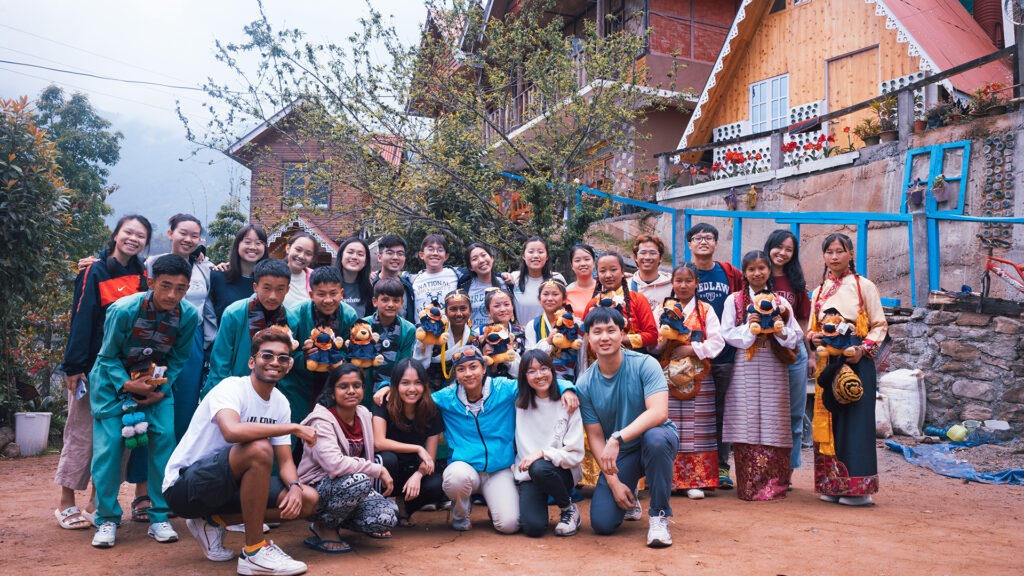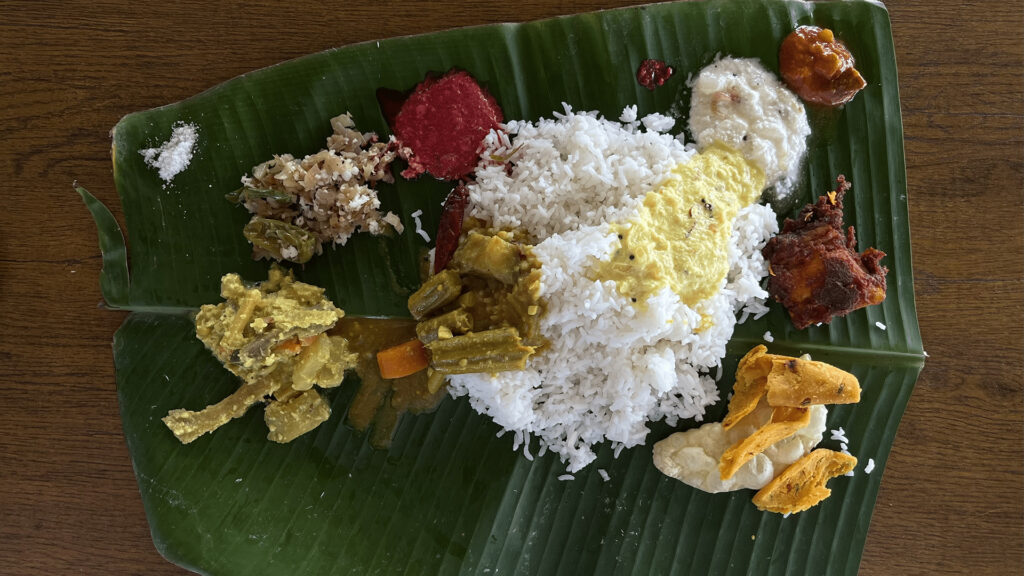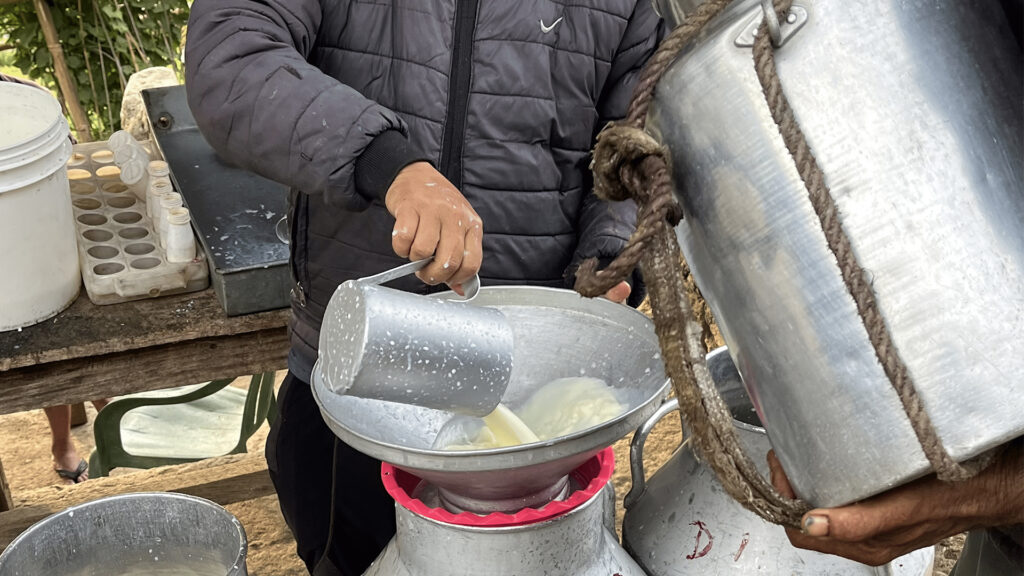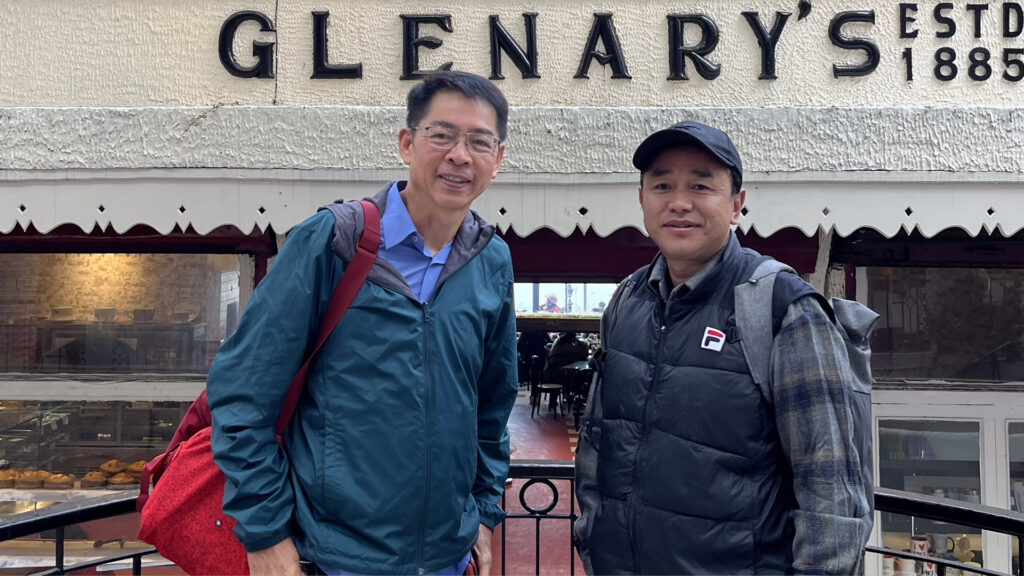Seeing India with New Eyes through a Journey on its Winding Trails
June 5, 2023
IN BRIEF | 5 min read
- Under the Study Trips for Engagement and EnRichment (STEER) programme, a group of students from the Yong Loo Lin School of Medicine, College of Design and Engineering, and Faculty of Arts and Social Sciences embarked on an enlightening two-week journey to India, visiting Kerala, Lamagoan - a town near Darjeeling - and Kolkata.

Spending nearly two weeks in fairly spartan living conditions, going for days without having a shower, or only having the option of taking a shower with ice-cold water — for many people, going on such a trip would be a daunting prospect.
But it was this modest proposition that prompted 19 NUS students from the Yong Loo Lin School of Medicine, College of Design and Engineering and Faculty of Arts and Social Sciences to embark on a 12-day journey to Alappuzha in India’s Kerala state, as well as Kolkata and Darjeeling in the state of West Bengal as part of the Study Trips for Engagement and EnRichment (STEER) programme.
Administered by the Global Relations Office, and led by Faculty members, NUS STEER aims to help undergraduates break existing mindsets about emerging regions through participation in an immersive educational, enrichment and cultural experience. Launched in 2010, it has since expanded to include countries in Asia, Central and Latin America, the Middle East, Eastern Europe and Southern Africa.
Led by Associate Professor Tan Lai Yong, a Fellow at the College of Alice and Peter Tan and Residential College 4, the maiden post-COVID STEER expedition saw students engaging the local communities to learn about public health issues on the ground, the effects of climate change, and the livelihood challenges faced by the people there. Taking place from 18 to 30 April 2023, the trip was also one of the experiential learning opportunities offered under the Health and Humanity pathway of NUS Medicine’s Pathway Programmes, an elective programme that seeks to broaden students’ skillsets related to clinical practice and healthcare in the 21st century.
WATCH THE TEAM'S JOURNEY through Kerala, Darjeeling and Kolkata and their first-hand experiences of the diverse social, cultural, and economic environments that make these regions so unique.
Community Development and Healthcare in Kerala
The trip began in Alappuzha, Kerala, a scenic tropical area sometimes known as “Venice of the East”. Being immersed in a different cultural and social setting was refreshing for the team. Through a four-day stay aboard a houseboat, they gained insights on the lifestyle and farming practices of neighbourhoods located in areas only accessible by boat. A highlight of the experience was learning how to handpick, cut and prepare fresh banana leaves to be used as serving plates. Used in this way, the leaves impart a subtle aroma to the food, accentuating the flavours of dishes such as curry, chapati, dal and chutney.
Kerala offered valuable lessons pertaining to healthcare. Prior to the trip, online seminars with infectious disease experts in Kerala prepared the team to comprehend the diversity of the state’s communities as well as the region’s geographical complexity. Against this backdrop, Kerala’s success in battling the COVID-19 pandemic underscored for the team the importance of commitment and trust in matters of public health. The students also caught a glimpse of traditional medical practices like homeopathy and explored the potential for complementary alternative medicine to serve synergistically alongside Western medical providers in delivering healthcare in Singapore.
The interdisciplinary nature of the team also allowed them to broaden their horizons as they shared what they learnt from the different lenses of healthcare, sociology, engineering and innovation.

Community Leadership in Darjeeling
The next stop took students from the below-sea level backwaters of Alappuzha to Lamagaon, a small mountain village in Darjeeling 2000 metres above sea level.
Students were greeted with views of colourful homes across the valleys, the cacophony of cows mooing as they grazed, and on occasion, cold showers when the electricity was cut – a stark contrast from the urban environment in Singapore.
In the absence of public transportation, they embarked on long walks at the crack of dawn and met farmers who formed groups to collect milk from a farmhouse, which was tested to ensure its safety for consumption and later sold at a nearby market. Then it was time to climb a nearby peak to join villagers in planting about 50 walnut, apple and kiwi trees. On days when it rained, they were spared the task of getting water for the saplings. And while some students were drenched in the cold and heavy rain, they were treated to a warm hearty meal consisting of sticky rice stuffed into bamboo stems roasted over an open fire.

A highlight of the trip was interacting with Mr Bishesh, an entrepreneur who runs a homestay. A household name in Lamagaon, he believes in actively contributing ideas to make life in the village better for its people and is known for starting the first school in the village, as well as kickstarting many farming initiatives and self-help groups. On the 10-kilometre hike to a waterfall, students heard from villagers about his efforts to purchase and install pipes in the village to address the lack of running water. During the visit, his contributions were apparent through projects like a grass carp fish farm and a honey bee programme, providing valuable insights about community leadership.

Reflecting on her experience, Year 4 English Literature student Grace Cheong, shared, “Rural areas are beautiful for those who have the financial ability and opportunity to leave. This insight hit me hard as I learned about how monsoon and winter seasons directly affect locals; and how the same mountains we marvel at, are the long roads travelled by the children to go to school each day.”
“Yet, against this backdrop we heard stories of resilience and saw for ourselves the success stories of education, basic amenities, as well as a thriving, diverse community in the process of building sustainable initiatives and raising a generation of sensitive, intelligent youths. This was heartening to witness,” she added.

Immersion in the Rich Heritage of Kolkata
The students then travelled eight hours by train to their third and final destination – Kolkata, previously the capital of the British East India Company. In the wee hours of the morning, they spent time at the Mullick Ghat Flower Market by the Hooghly River, one of the most crowded flower markets in the world. Later, the students visited Victoria Park, the home of Mother Teresa, the late Roman Catholic nun who devoted her life to caring for the destitute and dying in Kolkata, and the used bookstores at College Street just outside Kolkata University. Boasting of Kolkata’s rich heritage, these landmarks gave the students a complete cultural immersion for which to end the trip.
Summing up what the trip meant to him, Year 2 Medicine student A. Ganeshaa, said, “Moving from reading words in our textbooks to listening to the stories of people, this trip unveiled the realities outside our classrooms and added a softer side to our learning. Looking back at our encounters with the locals, we were greeted with so much warmth and hospitality despite being foreigners, and this reminded us that kindness truly knows no borders.”
While the Health and Humanity STEER trip spanned only two weeks, the impact it left on the students was indelible. Many of them are now inspired to extend their service and compassion to the local community and beyond.
This story by NUS Medicine Year 2 students Teo Jun Wei Tobias and Ng Sue-May first appeared in NUSnews on 1 June 2023.

